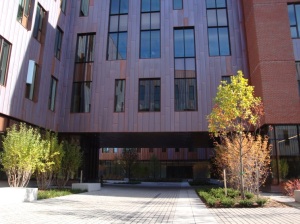Activists. Scientists. Scholars. Mothers. Writers. Women have been contributing to the environmental movement since its humble beginnings. Women have been disdained, excluded, jailed, and even murdered for working towards environmental progress, yet they still fight on. In honor of Women’s History Month, we have compiled profiles of revolutionary women from across the spectrum of the environmental movement. These women show us the value of empowerment, and inspire us with their passion for a better world.
Rosalie Edge

Despite her wealthy, socialite upbringing in New York City, Rosalie Edge was anything but proper and demure. A dedicated suffragist, Edge shifted her attention towards the National Audubon Society after the passage of the 19th amendment. Having become aware of the gender-based injustices happening within the National Audubon Society, Edge sued the organization and made a point of exposing the persistent corruption. Through lawsuits and exposing pamphlets, Edge successfully had all the former directors removed from the organization.
Edge maintained this momentum for the rest of her life. The Emergency Conservation Committee that she created in response to the Audubon Society crisis became her instrument of political change. With its support she was able to preserve 8,000 acres of sugar pines on the southern edge of Yosemite and create both Kings Canyon and Olympic National Parks.
When the Audubon Association didn’t want to pay for a hawk sanctuary that she felt strongly about, Edge raised the money and bought the place herself, paving the way for a mindset of species preservation that had not existed in conservation circles before her. Hawk Mountain Sanctuary, as it was called, was happily owned and run by Edge for the rest of her life, and is still an important place of conservation today. During her reign, Rosalie Edge was considered the leader of the conservation movement – her period’s John Muir. A tenacious and effective activist, she changed the movement in ways we can still feel today, and paved the way for Rachel Carson and all other women who came after her.
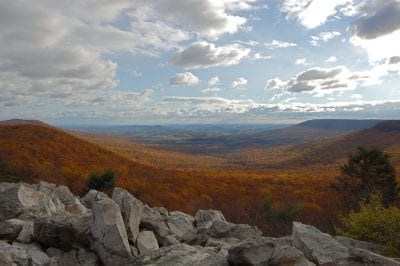
Sylvia Earle
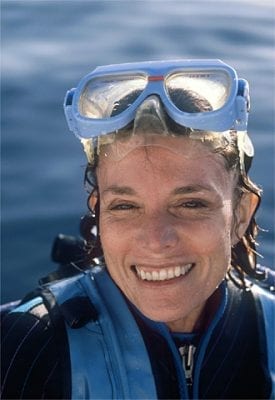
Sylvia Earle has inspired a generation of people to value our oceans. Also known as “Her Deepness,” or “The Sturgeon General,” Earle started her journey by obtaining a PhD in phycology (the study of algae) in 1966. A deep diving pioneer, she has tied the overall record for a solo dive depth in 1986 (the first woman to do so), and founded Deep Ocean Engineering, a business that aims to improve the technology of robotic and piloted subsea systems. She was awarded Time Magazine’s first Hero for the Planet designation in 1998, and has held the title of National Geographic Explorer-in-Residence since then. As the first woman to serve as Chief Scientist for the National Oceanic and Atmospheric Association (NOAA), she was also the chair of the Advisory Council for the Ocean for Google Earth. An expert on the impact of oil spills, she was a crucial resource in the Exxon Valdez, Mega Borg, and Deepwater Horizon disasters.
Throughout her extensive career she has held positions at various universities, has won a slew of awards, and has authored over 150 publications. One of her greatest contributions to ocean preservation, Mission Blue, included a global coalition of over 200 organizations aims to preserve the world’s marine protected areas, deemed ‘Hope Spots.’ Sylvia Earle recognizes the power of science, and has harnessed it to capture the imaginations of the public.

Wangari Maathai
Nobel laureate and leading environmentalist political activist Wangari Maathai spent her life promoting intersectional environmentalism, advocating that environmental action is “more than planting trees, it’s planting ideas.” Born in the rural Kenyan village of Nyeri, Maathai was one of 300 Kenyan students to be a part of the Airlift Africa program in 1960, a program that allowed her to receive an education at a university in the United States. After earning her bachelor’s and master’s degrees in biology, she returned to Kenya, becoming the first woman in East and Central Africa to earn a doctorate degree.
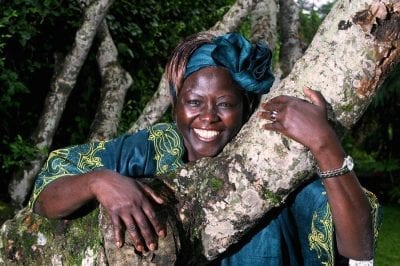
Embracing the connections between gender inequality and environmental issues, Maathai founded the Greenbelt Movement, a movement that taught women sustainable land use practices. Since its inception, the movement has trained over 30,000 women and planted more than 51 million trees, an achievement that led to her Nobel Peace Prize Award. With a commitment to ecofeminism and equitable participation, Maathai has had a monumental impact on the global environmental movement.
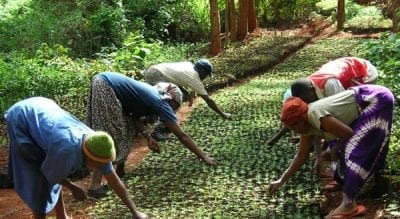
Lois Gibbs
Lois Gibbs is a story of the power that personal impact has to inspire national activism. She started out her journey as a mother in the small, suburban neighborhood of Love Canal. Her son attended the local elementary school in Niagara Falls, New York. It was discovered that her son’s elementary school and, with further investigation, the entire neighborhood, was built on top of a toxic waste site.

Fearing for the health of her son and all of the kids of Love Canal, Lois Gibbs was launched into activism. She began knocking on doors, creating petitions, and eventually came together with her neighbors to create the Love Canal Homeowners Association. After years of grassroots activism, confrontations with the New York State Department of Health, and national attention, Gibbs got what she wanted. Nearly one thousand families were evacuated from Love Canal, and a massive cleanup began.
Because of the hard work of Lois Gibbs and the residents of her neighborhood, the Environmental Protection Agency instituted a program to locate and clean up contaminated sites like Love Canal across the country. It’s called the Comprehensive Environmental Response, Compensation and Liability Act, or the Superfund Program.
Since Love Canal, Gibbs has founded a grassroots environmental crisis center called the Center for Health, Environment and Justice (CHEJ), which focuses on creating strong local organizations to ensure the federal government is doing what it’s supposed to do. Gibbs has received many awards for her work, including the Goldman Environmental Prize, the Heinz Award, and a nomination for the Nobel Peace Prize. However, the most important legacy she is leaving behind is the support system she has created for those neighborhoods that suffer as Love Canal has suffered, but do not have the voice to call for change.

Vandana Shiva
A notable ecofeminist, scientist, writer, and activist, Vandana Shiva has worn many hats in her life, often at the same time. Brought up with a love for nature fostered by her two parents, she received a PhD in the philosophy of physics, and went on to interdisciplinary research in science, technology, and environmental policy at the Indian Institute of Science and the Indian Institute of Management in Bangalore. She eventually established Bija Vidyapeeth, an international college for sustainable living, in collaboration with the U.K.’s Schumacher College.
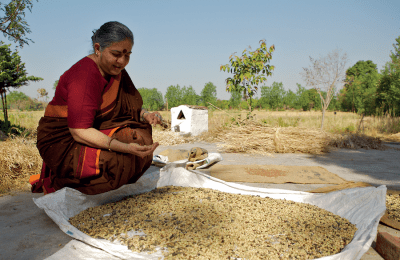
Shiva is a leader in championing agricultural biodiversity and local sovereignty. She is on the cutting edge of advances in food technology and the human rights implications of such advances. Much of her activism in this area has been achieved through a national movement she started in 1991 called Navdanya, whose mission is to “protect diversity and integrity of living resources, especially native seed, the promotion of organic farming and fair trade.” Navdanya has educated farmers across India of the value of diverse and individualized crops, and has mounted activist campaigns on issues involving intellectual property rights, biotechnology, bioethics, and genetic engineering.

A notable ecofeminist, Siva has written over 20 publications, many on topics that show how women’s rights and environmental issues are inextricably linked. In fact, the first book she published, Staying Alive, focused on redefining perceptions of third world women. In 1990, she wrote a report on women’s role in agriculture titled “Most Farmers in India are Women,” as requested by the Food and Agriculture Organization of the United Nations. She founded the gender unit at Kathmandu’s International Centre for Mountain Development, and is a founding board member of the Women’s Environment and Development Organization.
Shiva has changed the narrative around local sovereignty, sustainable farming, women in the environmental movement, farmers, globalization, and everything in between. She advises governments, international organizations, and is a leader in worldwide discussions. How is she capable of such extraordinary feats, and how can we emulate her? When asked, Shiva responded “you are not Atlas carrying the world on your shoulder. It is good to remember that the planet is carrying you.” Protecting the Earth is simply a matter of recognizing our place within it.
Want to know more about how UConn women are continuing progress for Sustainability? Follow us on Instagram and join our Newsletter!
UConn Office of Sustainability on Instagram
Newsletter Sign Up
Directly Fund Sustainability Progress at UConn
Donate


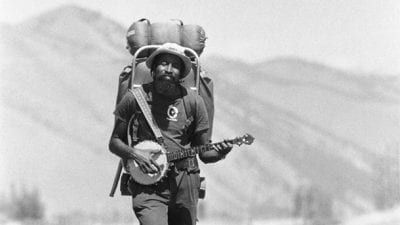

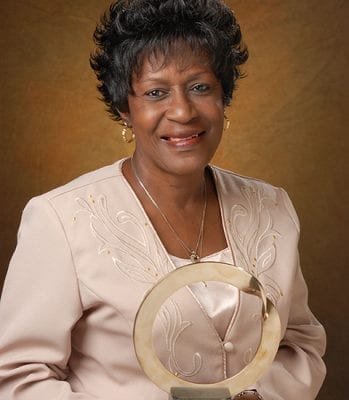




 This Spring Break, I had the privilege of participating in EcoHouse’s fourth annual service trip to Milam Creek and Glen Rogers in Wyoming County, West Virginia. Initiated by former EcoHouse program coordinator Brigid Belko, this Alternative Break assists the Friends of Milam Creek on various service projects. This organization is composed of local volunteer residents who seek to revitalize their community. In their own words: “Aspiring to restore Milam Creek and its adjacent neighborhoods to its former glory with clean, lush waters and creek beds, Friends of Milam Creek is uniting the community through collaborative action toward a healthier environment and better tomorrow.”
This Spring Break, I had the privilege of participating in EcoHouse’s fourth annual service trip to Milam Creek and Glen Rogers in Wyoming County, West Virginia. Initiated by former EcoHouse program coordinator Brigid Belko, this Alternative Break assists the Friends of Milam Creek on various service projects. This organization is composed of local volunteer residents who seek to revitalize their community. In their own words: “Aspiring to restore Milam Creek and its adjacent neighborhoods to its former glory with clean, lush waters and creek beds, Friends of Milam Creek is uniting the community through collaborative action toward a healthier environment and better tomorrow.” Dvon Duncan, Friends of Milam Creek’s Secretary, and Donna Burner, Chair, welcomed us all warmly and gave an introduction to the town and its situation. The Milam, McGraws, Ravencliff, and Glen Rogers region of the county is one of many small, relatively isolated communities in southern West Virginia that has been severely impacted by the coal industry over the last century. For decades, the timber, gas, and coal industries have held a virtual monopoly on the region. At one time mining companies forced workers to buy all provisions from company stores, preventing the growth of local businesses. Most men in the area have worked in the mines at some point in their lives, since there are few other jobs available to them. In addition to very poor working conditions, the mines have polluted the surrounding watersheds with heavy metals and coal residue. As a result of landscape modification, the narrow creek and river valleys where most towns lie have been prone to massive and deadly floods.
Dvon Duncan, Friends of Milam Creek’s Secretary, and Donna Burner, Chair, welcomed us all warmly and gave an introduction to the town and its situation. The Milam, McGraws, Ravencliff, and Glen Rogers region of the county is one of many small, relatively isolated communities in southern West Virginia that has been severely impacted by the coal industry over the last century. For decades, the timber, gas, and coal industries have held a virtual monopoly on the region. At one time mining companies forced workers to buy all provisions from company stores, preventing the growth of local businesses. Most men in the area have worked in the mines at some point in their lives, since there are few other jobs available to them. In addition to very poor working conditions, the mines have polluted the surrounding watersheds with heavy metals and coal residue. As a result of landscape modification, the narrow creek and river valleys where most towns lie have been prone to massive and deadly floods.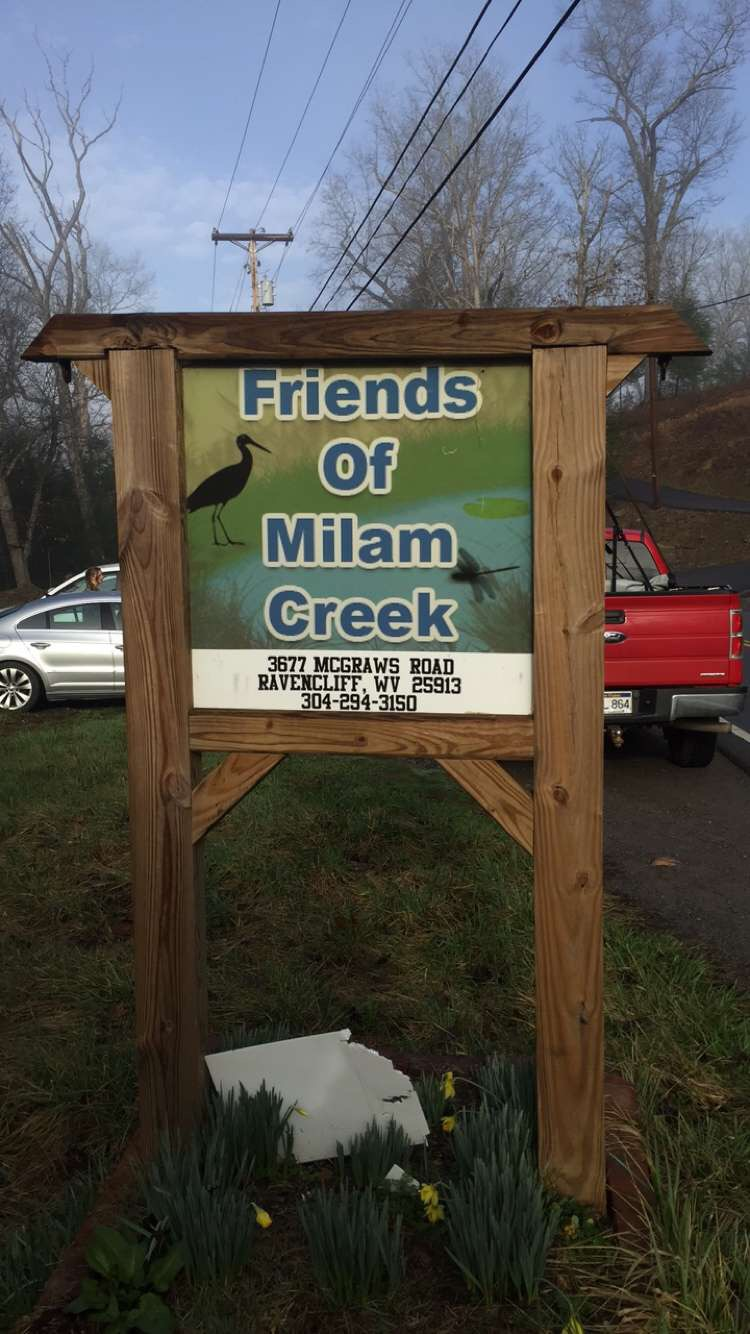 Throughout the week, we worked on several projects around the community. The main location was the Milam Creek House, where the Friends are based. Here, we helped to remove rotten wood from the basement and paint the building. Down the road, we helped to renovate the recently donated community center. This involved setting up electrical wiring and lighting throughout the building, as well as demolishing the old restrooms. Meanwhile, several people cleared invasive plants from the nearby creek bank to make room for a fishing deck. The final major project was the construction of a memorial to the more than 160 miners who died in Glen Rogers mines between 1917 and 1960. We installed a new fence and pathway on site to make way for the stone obelisk that will honor the dead.
Throughout the week, we worked on several projects around the community. The main location was the Milam Creek House, where the Friends are based. Here, we helped to remove rotten wood from the basement and paint the building. Down the road, we helped to renovate the recently donated community center. This involved setting up electrical wiring and lighting throughout the building, as well as demolishing the old restrooms. Meanwhile, several people cleared invasive plants from the nearby creek bank to make room for a fishing deck. The final major project was the construction of a memorial to the more than 160 miners who died in Glen Rogers mines between 1917 and 1960. We installed a new fence and pathway on site to make way for the stone obelisk that will honor the dead.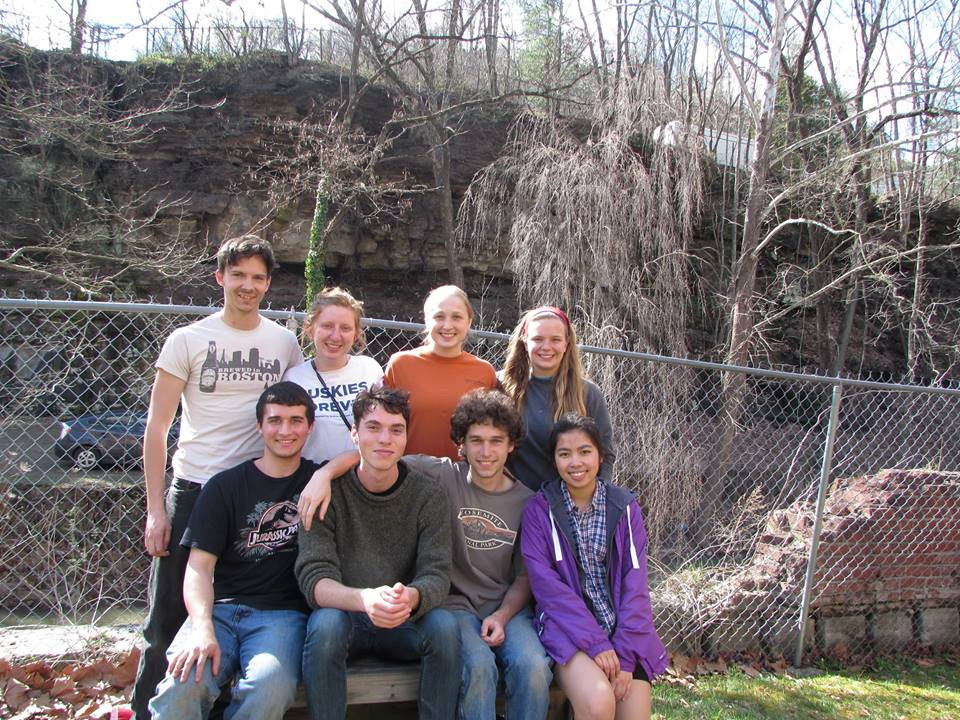


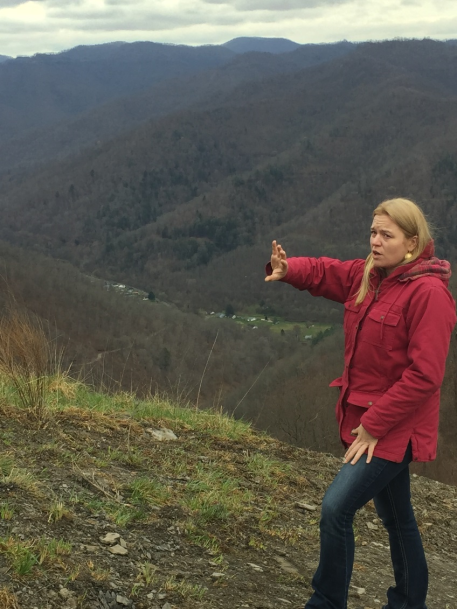


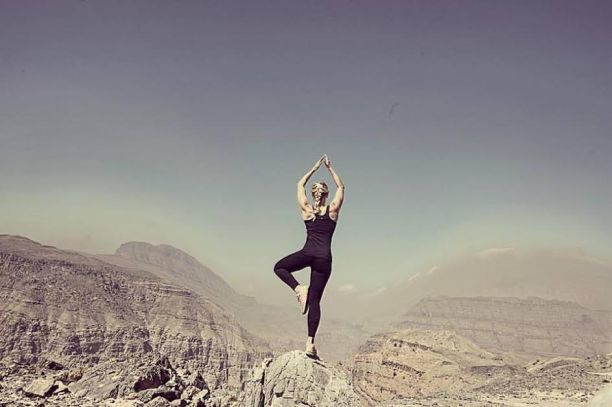 There are two forms of tourism: Tourism (Tourist) and Responsible Tourism (Traveler). The ‘Tourist’ will travel to locations that are relatively safe and within their comfort zone. They’ll expect to stay in a 3-5 star hotels owned by large corporations, embark on tours offered by the hotel, and will typically not veer off the beaten path to unknown locations. They’re knowledge of the local people of that country and their way of life is very limited, and they’re not interested in learning more about it first-hand. They are waited on by local people but that’s about as far as their study of that culture within that country will go. The hotels they stay in don’t necessarily have any sustainability or energy efficiency practices, instead they offer tours such as riding with the dolphins and learning about culture by having a woman come into the resorts event area for a belly dancing show, for example. The ‘Traveler’, on the other hand, will be more open to experience off-the-beaten-path locations and unique experiences that test their limits. They’ll be more supportive of the economies of local cultures (staying in locally owned hotels), spending time learning about the local people and communities, adding to the regeneration of the environment that surrounds them, and trust in their hosts.
There are two forms of tourism: Tourism (Tourist) and Responsible Tourism (Traveler). The ‘Tourist’ will travel to locations that are relatively safe and within their comfort zone. They’ll expect to stay in a 3-5 star hotels owned by large corporations, embark on tours offered by the hotel, and will typically not veer off the beaten path to unknown locations. They’re knowledge of the local people of that country and their way of life is very limited, and they’re not interested in learning more about it first-hand. They are waited on by local people but that’s about as far as their study of that culture within that country will go. The hotels they stay in don’t necessarily have any sustainability or energy efficiency practices, instead they offer tours such as riding with the dolphins and learning about culture by having a woman come into the resorts event area for a belly dancing show, for example. The ‘Traveler’, on the other hand, will be more open to experience off-the-beaten-path locations and unique experiences that test their limits. They’ll be more supportive of the economies of local cultures (staying in locally owned hotels), spending time learning about the local people and communities, adding to the regeneration of the environment that surrounds them, and trust in their hosts. During my travels in St. Lucia, I performed a case study. The island is comprised of at least several “1-800 Sandals” resorts. I wanted just to speak with the people who worked there to get a sense of their clientele and overall sense of happiness. The employees came up to me with a massive smile on their face, willing to answer any questions that I had, offering their input on activities, and the like. I sat down with one of them, Ron, and talked with him for a bit. I’m assuming he told me to call him Ron because it’s easier to pronounce to foreigners. I said, “Hey Ron, I’m not here to vacation, I’m here to learn more about 1-800 Sandal’s sustainability impact and its cultural influence. How do you like working here?”. He took me aside and said, “I can barely keep afloat, I work long hours, I’m overworked and don’t make enough to provide for my family. But it’s a job.” I asked, “Do the guests want to learn about your culture, where you’re from in St. Lucia?”, Ron responded, “No, they’re here for a vacation! They don’t want to learn about that type of stuff while they vacation here”, he said with a chuckle. I paid $70 for a dinner which granted me access to walk inside the premise. There were couples, mainly from Western areas of the world, and many from the US. I observed as they enjoyed their vacation, never leaving the resorts premises. They drank their Mojitos and Piña Coladas and enjoyed their Honeymoons, never once engaging in conversation with the people who worked for them. If they did, it was to show whoever it was they were Facetiming with, the idea that they were mingling with the local people when in reality, they weren’t. Meanwhile, the employees worked diligently to ensure a perfect vacation for their guests. They had the typical, “Save water, use less” signs located in the bathrooms, but in regards to their sustainability protocol, that was about it. In a place that receives an average of 9 hours of sunlight a day, they had no solar panels. They had no tours where guests had the opportunity to learn about the local culture. They had no reverse osmosis system or wildlife/ecology conservation program, which could easily be implemented given the vast capital that this resort chain endows. I went back to my locally owned lodge near the airport to digress. If these resorts focused on their sustainability message, the people who vacationed there would not only experience a luxurious vacation, but they’d walk away having contributed to the greater good of the environment and local culture. A feel good, do good vacation. There needs to be a major shift in the way we travel, and regenerative tourism has to be it.
During my travels in St. Lucia, I performed a case study. The island is comprised of at least several “1-800 Sandals” resorts. I wanted just to speak with the people who worked there to get a sense of their clientele and overall sense of happiness. The employees came up to me with a massive smile on their face, willing to answer any questions that I had, offering their input on activities, and the like. I sat down with one of them, Ron, and talked with him for a bit. I’m assuming he told me to call him Ron because it’s easier to pronounce to foreigners. I said, “Hey Ron, I’m not here to vacation, I’m here to learn more about 1-800 Sandal’s sustainability impact and its cultural influence. How do you like working here?”. He took me aside and said, “I can barely keep afloat, I work long hours, I’m overworked and don’t make enough to provide for my family. But it’s a job.” I asked, “Do the guests want to learn about your culture, where you’re from in St. Lucia?”, Ron responded, “No, they’re here for a vacation! They don’t want to learn about that type of stuff while they vacation here”, he said with a chuckle. I paid $70 for a dinner which granted me access to walk inside the premise. There were couples, mainly from Western areas of the world, and many from the US. I observed as they enjoyed their vacation, never leaving the resorts premises. They drank their Mojitos and Piña Coladas and enjoyed their Honeymoons, never once engaging in conversation with the people who worked for them. If they did, it was to show whoever it was they were Facetiming with, the idea that they were mingling with the local people when in reality, they weren’t. Meanwhile, the employees worked diligently to ensure a perfect vacation for their guests. They had the typical, “Save water, use less” signs located in the bathrooms, but in regards to their sustainability protocol, that was about it. In a place that receives an average of 9 hours of sunlight a day, they had no solar panels. They had no tours where guests had the opportunity to learn about the local culture. They had no reverse osmosis system or wildlife/ecology conservation program, which could easily be implemented given the vast capital that this resort chain endows. I went back to my locally owned lodge near the airport to digress. If these resorts focused on their sustainability message, the people who vacationed there would not only experience a luxurious vacation, but they’d walk away having contributed to the greater good of the environment and local culture. A feel good, do good vacation. There needs to be a major shift in the way we travel, and regenerative tourism has to be it. Two continents away was another resort I’d visited. Located at the tip of the Oman peninsula, nestled on the northern Musandam Peninsula and facing the Arabian sea, is the 5 star, Six Senses Zighy Bay Resort. The guests who visit this particular resort must be willing to venture way out into the Middle East. They have to be open to traveling two hours from the Dubai Airport by car, through the desert of UAE and Oman to get to this very secluded resort deep within the mountainous rifts. I took a seat next to Manuel, the Organic Garden intern at Six Senses. He traveled there from Germany. “How much of the garden is factually organic? In my experience, it’s challenging to harvest an organic garden over 80% to serve a hotel.”, I asked. Manuel said, “It’s a 95-98% organic garden that supplies much of the produce for the resort”. There is a compost system, a reverse osmosis irrigation system and the resort has plans to install solar panels in the near future. In every room, the guests can purchase a cute little Zighy goat stuffed animal where 100% of the proceeds go to the local schools. They also have cultural tours to the mountains and communities, where guests have the opportunity to visit the families who live in the surrounding areas. I took a ride with one of the guides and had the opportunity to meet Mohammed, a man from Pakistan who lived high up in the mountains. “I chose to live here for peace and serenity.”, Mohammed said. Every day, he climbs 100 stairs just to get to the top, where his rustic house is.
Two continents away was another resort I’d visited. Located at the tip of the Oman peninsula, nestled on the northern Musandam Peninsula and facing the Arabian sea, is the 5 star, Six Senses Zighy Bay Resort. The guests who visit this particular resort must be willing to venture way out into the Middle East. They have to be open to traveling two hours from the Dubai Airport by car, through the desert of UAE and Oman to get to this very secluded resort deep within the mountainous rifts. I took a seat next to Manuel, the Organic Garden intern at Six Senses. He traveled there from Germany. “How much of the garden is factually organic? In my experience, it’s challenging to harvest an organic garden over 80% to serve a hotel.”, I asked. Manuel said, “It’s a 95-98% organic garden that supplies much of the produce for the resort”. There is a compost system, a reverse osmosis irrigation system and the resort has plans to install solar panels in the near future. In every room, the guests can purchase a cute little Zighy goat stuffed animal where 100% of the proceeds go to the local schools. They also have cultural tours to the mountains and communities, where guests have the opportunity to visit the families who live in the surrounding areas. I took a ride with one of the guides and had the opportunity to meet Mohammed, a man from Pakistan who lived high up in the mountains. “I chose to live here for peace and serenity.”, Mohammed said. Every day, he climbs 100 stairs just to get to the top, where his rustic house is.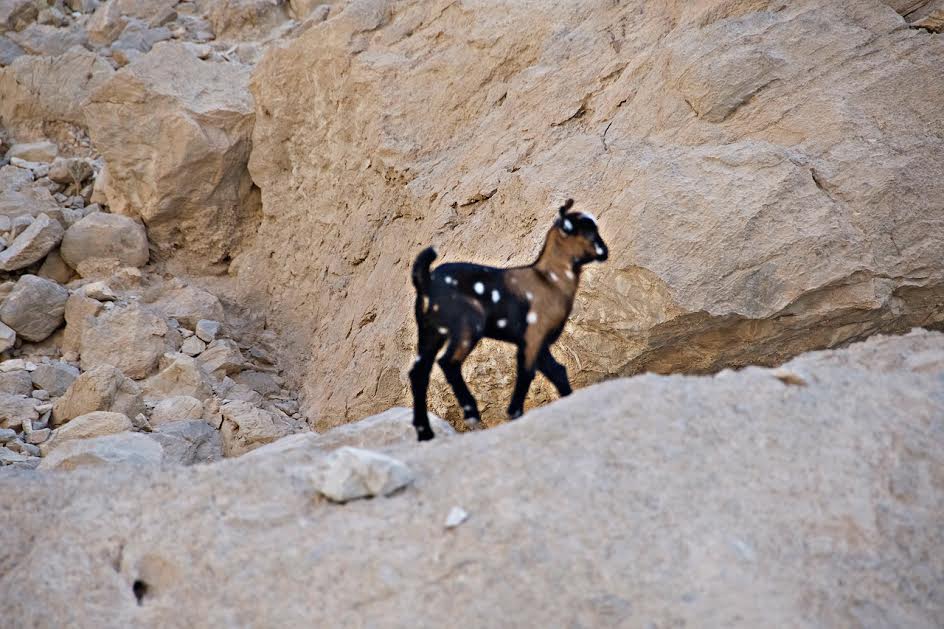 The primary focus of Expedition 196 is to generate awareness within the tourism sector. To deter travelers from the traditional experience, and focus more on the development of regenerative hotels and tour companies, in order to reverse damage to the environment and save endangered species and cultures who are suffering. Traveling “Sustainably” doesn’t have to mean the letting go of things that provide comfort to the average traveler. That’s what rustic travel is for; to give up certain elements that make a person comfortable, in order to experience a truly authentic, and surreal experience, with traditional essences of normality, left behind. Sustainability and moreover, regenerative tourism provides an opportunity for the traveler to reduce their carbon footprint, while making friends with the local people. Sure, they might have to give up their Herbal Essences shampoo in order to use the biodegradable shampoo and soaps provided by the hotel (if they do so choose), but it’s a do-good-feel-good experience that should add to the overall authenticity of their vacation. Sustainable/Regenerative resorts, lodges and hotels can range from $10/night to $10,000/night. This form of travel appeals to all types of travelers and that’s the best thing about it. There’s really no excuse to not travel in this way.
The primary focus of Expedition 196 is to generate awareness within the tourism sector. To deter travelers from the traditional experience, and focus more on the development of regenerative hotels and tour companies, in order to reverse damage to the environment and save endangered species and cultures who are suffering. Traveling “Sustainably” doesn’t have to mean the letting go of things that provide comfort to the average traveler. That’s what rustic travel is for; to give up certain elements that make a person comfortable, in order to experience a truly authentic, and surreal experience, with traditional essences of normality, left behind. Sustainability and moreover, regenerative tourism provides an opportunity for the traveler to reduce their carbon footprint, while making friends with the local people. Sure, they might have to give up their Herbal Essences shampoo in order to use the biodegradable shampoo and soaps provided by the hotel (if they do so choose), but it’s a do-good-feel-good experience that should add to the overall authenticity of their vacation. Sustainable/Regenerative resorts, lodges and hotels can range from $10/night to $10,000/night. This form of travel appeals to all types of travelers and that’s the best thing about it. There’s really no excuse to not travel in this way.

